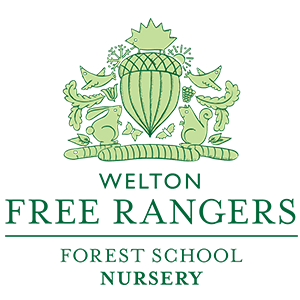I hope this finds you all well rested and that 2013 has started well for you. We’ve had plenty to get stuck into this week at Free Rangers what with new rooms and spaces to get used to, and exciting new developments to plan for. The objective of this week’s Forest School, and on top of the agenda, was filling up our wood store after it took something of a hammering during the run up to Christmas on those chilly December days. Not the most exciting of sessions for some of the children, but never-the-less one they can get involved with and learn from. Tool use and safety are the true learning intention of these sessions (the bi-product being we get plenty of logs to season for later in the year) and we take this seriously during Forest School. Each session follows the same procedure of making sure the children can name and safely use the tool(s) in question; this week the Bow Saw (although some children have taken to call it the Bone Sword, much better I think) and the Loppers, both of which deserve the same level of respect. I ask if the children can tell me where the dangerous parts are and how we handle and move them safely looking at where our hands and bodies should be - both for the user and onlooker. Similarly, it’s also important to gauge an emotional response towards tools. Before starting I ask the if the children are happy to use planned tool for that week - I don’t want to force a child to participate and create a negative association with it.
By promoting a positive working relationship, we can encourage children to further develop and progress themselves not just for their motor skills and dexterity, but also expressively and creatively as well. We hope to have a “green” working station at the nursery soon so children can employ a range of tools to create art and sculpture, as well as more practical items such as bird boxes or insect homes. By reinforcing these procedures and questions each week or whenever tools are used, it starts to become second nature and part of the children’s management of risk. Slowly this behaviour is modelled around the nursery, whether this during Forest School, something the children are saying to each other, or modelled through their play. This is immensely rewarding to see. [nggallery id=8]
As a part of these kind of sessions, I think it’s important the children can use as many senses as possible when we plan activities around wood. It’s great to allow the children to smell the different aromas, explore the colours, patterns and rings and feel the textures of the barks. This enables a deeper appreciation and connection with the outdoors, and is just as important to me as the tool safety aspect is.
I guess the true test is knowing when a child has taken on board something you have shared with them. For me it’s simple: A role reversal. As a Forest School practitioner best practice should be modelled at all times. But then sometimes when you think none of the children are looking, one slips into “adult-shortcut” mode and perhaps picks shavings off the saw blade or crosses the fire circle (naughty I know) and is then thoroughly reprimanded by the children for it. And quite rightly too; practice what you preach as the saying goes. Although with some of the Forest School children, it’s like being told off by Jeremy Paxman on Newsnight...
Until next time, stay wild Midsomer Norton.
R.Fox
Next week: Wooden Birds - Continued tool use, and further exploring the children’s fine and gross motor skills.
